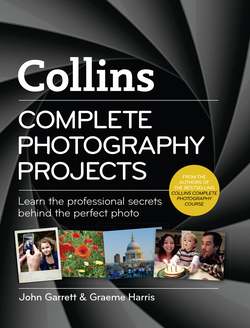Читать книгу Collins Complete Photography Projects - John Garrett - Страница 31
LENSES
ОглавлениеThe primary function of a lens is to focus the image onto the film or sensor. It also controls the angle of view and houses the aperture diaphragm.
You have a choice of using fixed focal length (prime) lenses or zoom lenses. The latter are designed to provide a range of focal lengths in one lens, with wide-angle zooms providing the shorter lengths and telephoto zooms covering the longer ones. Zoom lenses are almost universally used now because they reduce the amount of equipment you have to carry around. The advantage of prime lenses is that they have larger apertures and are the ultimate in optical sharpness. However, most of us would not be able to tell the difference in general application.
The decision as to what focal length you select for a photograph should not just be about encompassing more of the subject with a wide angle lens or getting closer with a telephoto. It is a creative decision based on the fact that lenses control perspective and also, linked with the aperture, dictate how much is in focus in front of and behind the point of focus – the depth of field.
The majority of the pictures in this book have been taken on DSLR cameras with APS-C sensors and the focal length stated in the captions applies to those, except where it is stated that the picture has been shot on film. To find the equivalent APS-C digital angle of view for the film images, divide the focal length by 1.5.
WIDE-ANGLE LENS
This is an example of a wide-angle lens at work. It has enabled me to get very close and look right into the ears of wheat in the foreground while still showing that this is a vast field of grain. Stopping down the aperture to f16 has kept the picture sharp from the foreground back to infinity. 1/250 second at f16, 24mm, 100 ISO film. JG
TELEPHOTO LENS
This is an example of a telephoto lens helping me to interpret the hunting scene the way I felt it looked. The long focal length has compressed the perspective, making the rear riders appear closer to those in the foreground than was the case. Shooting with a wide aperture has made the leading rider and dogs sharp, separating them from the out-of-focus background. 1/350 second at f3.5, 400mm, 400 ISO film. JG
